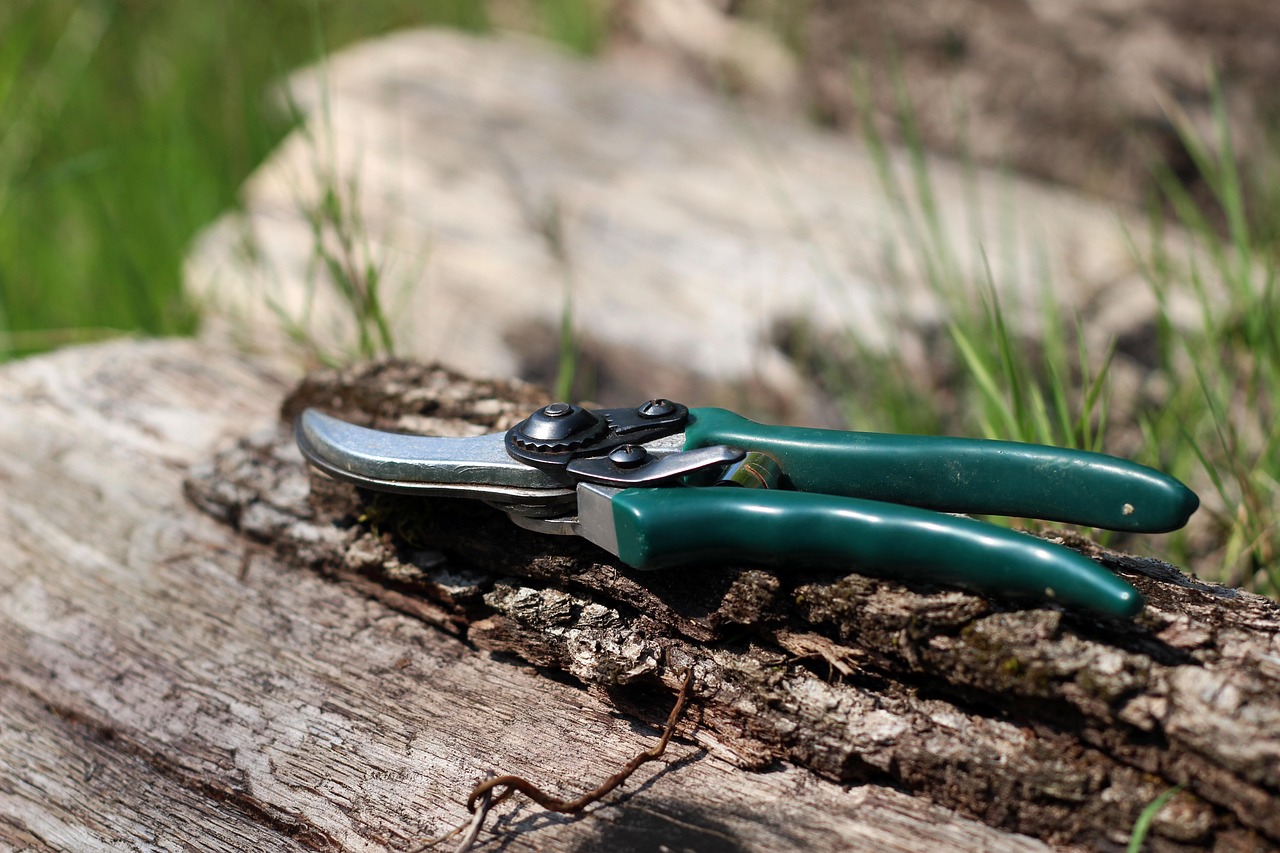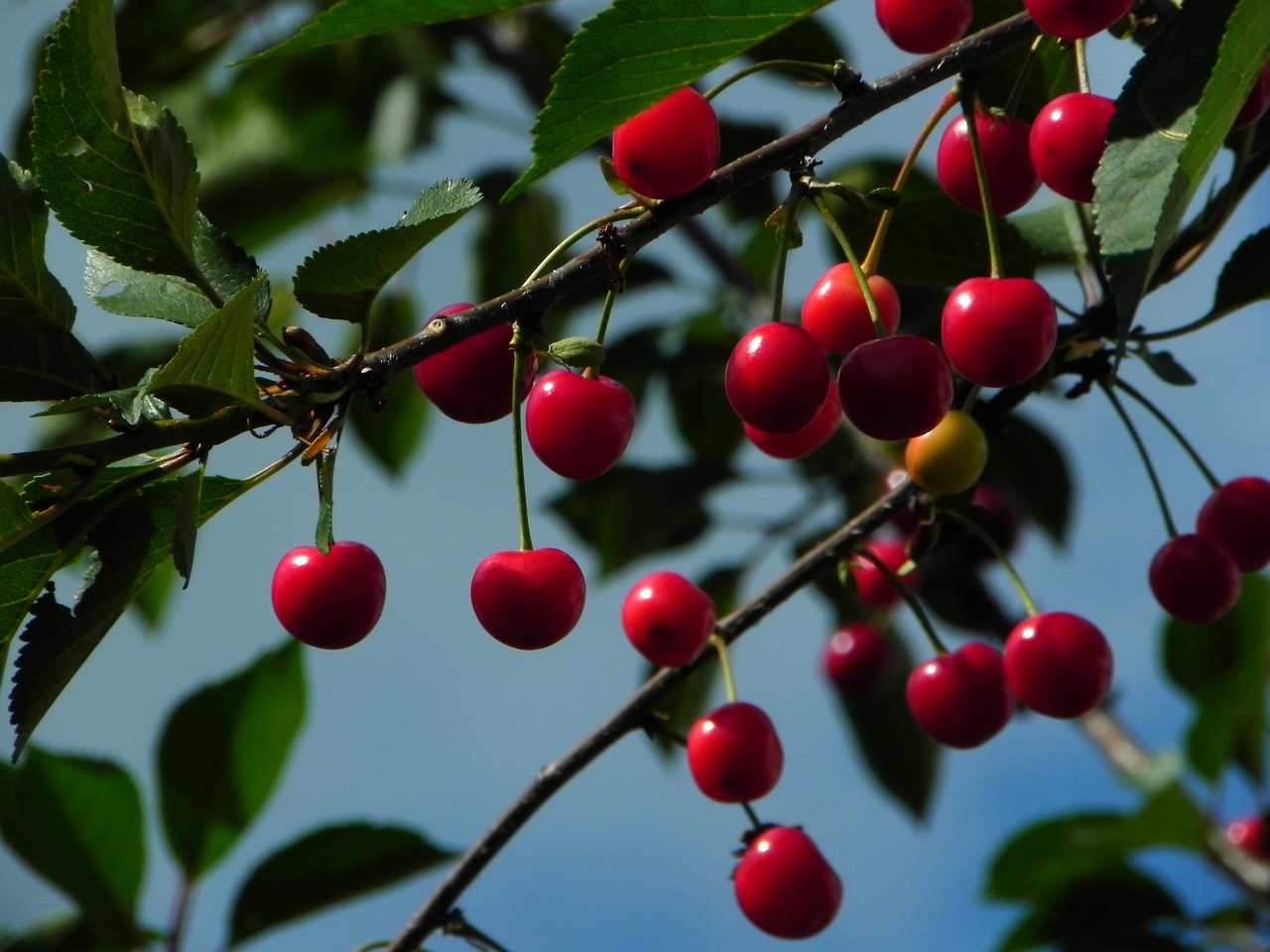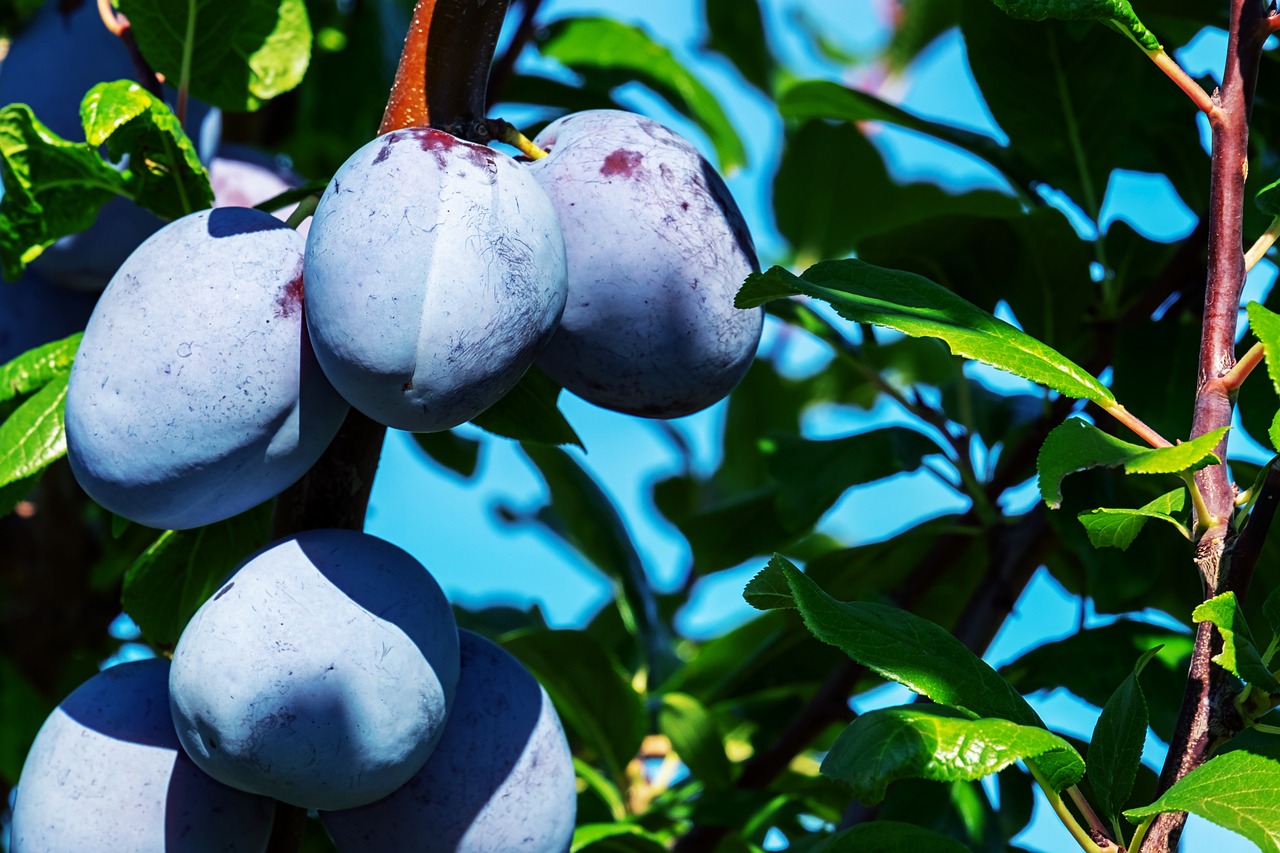Seasonal pruning of stone fruit trees is essential for promoting healthy growth, maximizing fruit production, and maintaining their shape. Proper timing and techniques can lead to robust trees and a bountiful harvest.
Stone fruit trees, including cherries, peaches, plums, and apricots, thrive when pruned at the right times during the year. These trees produce stone fruits, which have a large pit surrounded by sweet flesh. Pruning not only enhances the aesthetic appeal of the trees but also plays a critical role in managing their health and productivity.

Understanding the specific needs of each type of stone fruit tree is vital. Each variety may require different pruning techniques or timing based on their growth patterns and flowering habits. For example, many stone fruit trees flower on last year’s growth, meaning that incorrect pruning can significantly impact their yield for the current season.
Importance of Seasonal Pruning
Pruning stone fruit trees at the appropriate times ensures they remain healthy and productive. Here are some key reasons why seasonal pruning is necessary:
- Promotes Air Circulation: Pruning improves airflow within the tree canopy, reducing the risk of fungal diseases.
- Enhances Sunlight Exposure: Properly pruned trees allow sunlight to reach more branches, boosting photosynthesis and fruit development.
- Controls Tree Size: Regular pruning keeps trees manageable in size, making harvesting easier and reducing the risk of limb breakage.
- Encourages New Growth: Pruning stimulates new growth, which is essential for fruit production in the following seasons.
- Removes Dead or Diseased Wood: Eliminating unhealthy branches prevents the spread of disease and pests.
Each of these benefits contributes to a healthier tree and a more abundant harvest. However, knowing when to prune is just as important as how to prune. Seasonal timing varies based on climate and specific tree types.

Timing for Pruning Stone Fruit Trees
The timing for pruning stone fruit trees generally falls into three main categories: winter pruning, summer pruning, and post-harvest pruning. Each has its own advantages and should be approached with care.
Winter Pruning
Winter pruning is typically done while the tree is dormant. This period usually spans late winter to early spring, before new growth begins. The benefits of winter pruning include:
- Allows for better visibility of the tree’s structure since leaves are absent.
- Reduces stress on the tree as it prepares for new growth.
- Encourages strong bud development for fruiting in the spring.
During winter pruning, focus on removing dead or crossing branches. Aim to shape the tree to allow for an open center, which promotes better air circulation and light penetration.

Summer Pruning
Summer pruning is less common but can be beneficial for managing growth. This type of pruning typically occurs after the harvest season. The goals of summer pruning include:
- Controlling excessive growth that may hinder air circulation.
- Redirecting energy from excess foliage to fruit production.
- Removing water sprouts and suckers that drain energy from the main tree.
Summer pruning should be done cautiously to avoid stressing the tree during its active growth period. It is best to limit this practice to light trimming rather than heavy cuts.
Post-Harvest Pruning
Post-harvest pruning occurs shortly after fruiting has finished. This timing allows for immediate adjustments based on the tree’s performance during the growing season. The benefits include:

- Removing any damaged branches that occurred during the harvest.
- Adjusting the tree’s structure for better light exposure next year.
- Improving overall health by eliminating any potential disease carriers before winter sets in.
This type of pruning helps set the stage for a successful growing season in the following year.
| Pruning Type | Best Time | Main Goals |
|---|---|---|
| Winter Pruning | Late Winter to Early Spring | Shape tree; remove dead wood; promote strong bud development |
| Summer Pruning | Post-Harvest Season | Control growth; manage light exposure; remove water sprouts |
| Post-Harvest Pruning | Immediately After Harvest | Repair damage; adjust structure; prevent disease |
By understanding these seasonal pruning techniques, you can ensure that your stone fruit trees will remain healthy and productive for years to come. The knowledge of when and how to prune not only enhances your gardening skills but also leads to a more fruitful harvest each season.
Essential Pruning Techniques for Stone Fruit Trees
Effective pruning of stone fruit trees requires a variety of techniques tailored to the tree’s growth habits and structure. Understanding these methods can significantly impact the health and productivity of your trees. Here are some essential pruning techniques to consider:
Heading Cuts
Heading cuts involve cutting a branch back to a bud or another branch. This technique encourages branching and creates a fuller tree. Heading cuts are particularly useful for:
- Encouraging New Growth: By cutting back to a bud, you promote side shoots, leading to a bushier tree.
- Maintaining Size: Heading cuts help keep the tree within a manageable height.
- Improving Light Penetration: The resulting branching allows better light access to inner foliage.
Thinning Cuts
Thinning cuts involve removing an entire branch back to its point of origin. This technique helps reduce overcrowding and improves air circulation. Key benefits include:
- Reducing Disease Risk: Better airflow minimizes the chances of fungal infections.
- Enhancing Fruit Quality: Thinning allows more energy to reach fewer fruits, improving size and flavor.
- Creating a More Open Canopy: An open canopy ensures that sunlight reaches all parts of the tree.
Summer Training
Summer training is an important methodology used in conjunction with seasonal pruning. This technique focuses on shaping young trees during their active growing phase. It includes:
- Removing Unwanted Growth: Identify and remove any competing leaders or excessive lateral branches.
- Encouraging Desired Structure: Train branches to grow at wider angles, which can improve strength and fruit production.
- Establishing a Strong Framework: Create a solid foundation for future growth by selecting strong, well-placed branches.
Common Mistakes to Avoid When Pruning
While pruning stone fruit trees can be highly beneficial, there are common mistakes that many gardeners make. Avoiding these pitfalls will lead to healthier trees and better yields:
- Pruning at the Wrong Time: Pruning too early or too late can affect flowering and fruit set. Always adhere to the recommended timing for each pruning type.
- Over-Pruning: Removing too much foliage can stress the tree and reduce fruit production. Aim for balance.
- Neglecting Tools Maintenance: Using dull or dirty tools can harm the tree. Always ensure your pruning shears are sharp and clean.
- Lack of Planning: Before you start cutting, have a clear plan on what you want to achieve with your pruning efforts.
- Ignoring Tree Shape: Keep the natural shape of the tree in mind. A well-shaped tree is not only more attractive but also healthier.
Pruning Tools You Will Need
Using the right tools is crucial for effective pruning. Here are some essential tools that every gardener should have when working with stone fruit trees:
| Tool | Description | Purpose |
|---|---|---|
| Pruning Shears | A small, handheld tool with sharp blades. | Ideal for making clean cuts on small branches (up to ¾ inch). |
| Loppers | A long-handled tool that provides leverage for cutting thicker branches. | Used for branches that are too thick for pruning shears (up to 2 inches). |
| Saw | A hand saw or pole saw designed for larger cuts. | Essential for removing large branches that cannot be cut with shears or loppers. |
| Hand Rake | A tool for clearing debris from the ground. | Keeps the area around your trees tidy and helps prevent disease by removing fallen leaves and branches. |
| Pest Control Sprayer | A sprayer used to apply treatments for pests or diseases. | Aids in maintaining tree health post-pruning by addressing potential issues. |
Investing in quality tools will make your pruning tasks easier and more effective, leading to a healthier stone fruit tree population in your garden.
The Role of Fertilization After Pruning
After pruning, it is important to consider how fertilization plays a role in recovery and growth. Fertilizing after pruning can help trees regain strength and promote new growth. Here are some tips on fertilization:
- Select the Right Fertilizer: Choose a balanced fertilizer that contains nitrogen, phosphorus, and potassium. Organic options are also beneficial.
- Timing: Apply fertilizer shortly after pruning when the tree is ready to absorb nutrients for new growth.
- Application Method: Spread fertilizer evenly around the tree’s drip line, avoiding direct contact with the trunk.
This approach ensures that your stone fruit trees not only recover from pruning but also thrive in the upcoming growing season.
Understanding Tree Anatomy for Effective Pruning
To successfully prune stone fruit trees, it is important to understand the basic anatomy of the tree. Recognizing the different parts helps in making informed decisions during pruning. Here are some key components of tree anatomy:
Branches
Branches are vital for the overall structure of the tree. They divide into smaller limbs that support leaves and fruit. Understanding different types of branches is crucial:
- Main Branches: These are the primary limbs that provide support to the tree structure.
- Lateral Branches: Smaller branches that grow off the main branches. These are often where fruit develops.
- Water Sprouts: Rapidly growing shoots that usually arise from the trunk or major branches. They can drain energy from the tree if not managed properly.
Buds
Buds are undeveloped shoots that can develop into new leaves or flowers. There are two main types:
- Leaf Buds: These buds grow into leaves and are essential for photosynthesis.
- Flower Buds: These buds develop into flowers and ultimately produce fruit. Proper pruning should focus on encouraging healthy flower bud development.
Cambium Layer
The cambium layer is a thin layer of growth tissue located just under the bark. It is responsible for producing new cells that help the tree grow in diameter. Care should be taken to avoid cutting into this layer during pruning, as damage can hinder growth.
Pruning Patterns for Different Stone Fruit Trees
Each type of stone fruit tree has unique growth patterns and requirements. Adapting your pruning techniques to suit these variations can enhance tree health and fruit production. Below are some common stone fruit trees and their specific pruning patterns:
Peach Trees
Peach trees typically require aggressive pruning due to their vigorous growth. Key techniques include:
- Open Center Pruning: This method encourages an open canopy, allowing sunlight to penetrate and air to circulate.
- Shortening New Growth: Cut back new growth to promote branching and increase fruit-bearing potential.
Cherry Trees
Cherry trees can be more delicate and require careful handling. Consider these tips:
- Minimal Pruning: Avoid heavy pruning; focus on removing dead or diseased branches.
- Thinning Cuts: Use thinning cuts to maintain an open center without drastically altering the tree’s shape.
Plum Trees
Plum trees can vary widely in growth habit. Here are general guidelines for pruning:
- Vase Shape Structure: Aim for a vase-shaped structure to facilitate sunlight exposure and air movement.
- Remove Suckers: Regularly remove suckers from the base to improve overall vitality.
Agricultural Practices for Apricot Trees
Apricot trees thrive with specific agricultural practices, including pruning methods that emphasize:
- Sustainable Pruning: Use sustainable practices that promote natural growth patterns.
- Selective Thinning: Focus on thinning out excess fruit-bearing branches to improve fruit size and quality.
The Impact of Climate on Pruning Techniques
The climate in which stone fruit trees grow significantly influences their growth patterns and consequently their pruning needs. Here are some aspects to consider based on different climates:
Cool Climates
In cooler climates, trees may have a shorter growing season. Thus, consider the following:
- Aggressive Winter Pruning: This helps prepare the tree for a robust growing season by removing excess weight and dead wood.
- Focus on Flower Buds: Ensure that flower buds are left intact to maximize fruit production during the short summer months.
Warm Climates
In warmer regions, stone fruit trees may grow more vigorously, requiring different approaches:
- Summer Pruning Techniques: Implement summer pruning to control growth and redirect energy to fruit production.
- Avoid Late Pruning: Late pruning can stimulate new growth, which may not have enough time to harden before winter.
Pest and Disease Management During Pruning
Pest and disease management is an essential aspect of maintaining healthy stone fruit trees. Pruning creates open wounds that can be entry points for pests and diseases. Here are some strategies to minimize risks:
- Sanitize Tools: Regularly clean your pruning tools with a bleach solution or alcohol to prevent disease spread between trees.
- Pest Monitoring: Keep an eye out for signs of pests such as aphids or spider mites, especially after pruning.
- Disease Prevention: Apply fungicides or organic treatments as necessary after pruning to protect against fungal infections.
By implementing these pest and disease management techniques, you can ensure that your pruned stone fruit trees remain healthy and productive throughout their growing seasons.
Final Considerations for Pruning Success
As we conclude this comprehensive guide on seasonal pruning for stone fruit trees, it is essential to reflect on several additional considerations that can enhance the overall effectiveness of your pruning practices. Mastering these techniques and strategies will not only promote tree health but also significantly improve fruit quality and yield.
Understanding the Growth Cycle
Each stone fruit tree species has its own unique growth cycle that affects when and how it should be pruned. By understanding these cycles, you can better time your pruning activities to align with the tree’s natural rhythms:
- Early Spring: Many trees begin budding at this time. Pruning should be done before this growth begins to avoid cutting off potential flowers or fruit.
- Post-Harvest: After harvesting, trees can benefit from pruning to prepare for dormancy, allowing for better energy management.
- Late Summer: For certain varieties, light pruning in late summer can redirect energy toward fruit development instead of excessive vegetative growth.
Mulching and Soil Health
Healthy soil contributes significantly to the vitality of stone fruit trees. Adding organic mulch around the base of the trees can help maintain soil moisture and suppress weeds. Here are some benefits of mulching:
- Moisture Retention: Mulch helps retain soil moisture, reducing the need for frequent watering.
- Temperature Regulation: It moderates soil temperature changes, which is beneficial during extreme weather conditions.
- Nutrient Enrichment: Organic mulch breaks down over time, adding nutrients back into the soil.
Seasonal Observations
Regular observations throughout the growing season can inform your future pruning decisions. Take note of the following:
- Fruit Bearing: Observe which branches produce the best fruit and prioritize their health in future pruning.
- Pest Activity: Monitor for pest infestations early in the growing season to determine if adjustments in pruning methods are needed.
- Disease Symptoms: Look for signs of disease such as discoloration or wilting leaves, which could indicate a need for more aggressive pruning in certain areas.
Conclusion
In summary, seasonal pruning is a vital practice for ensuring the health and productivity of stone fruit trees. By understanding the anatomy of the trees, employing effective pruning techniques, considering climate impacts, managing pests and diseases, and maintaining soil health, you can set up your orchard for success. Remember that each variety has its unique requirements, so adapting your approach according to specific tree needs is crucial.
The benefits of proper pruning extend beyond aesthetics; they directly influence fruit quality and yield. As you apply the knowledge from this guide, you will cultivate healthier trees that not only survive but thrive, yielding a bountiful harvest year after year. Embrace these practices with patience and care, and enjoy the fruitful rewards of your labor.
